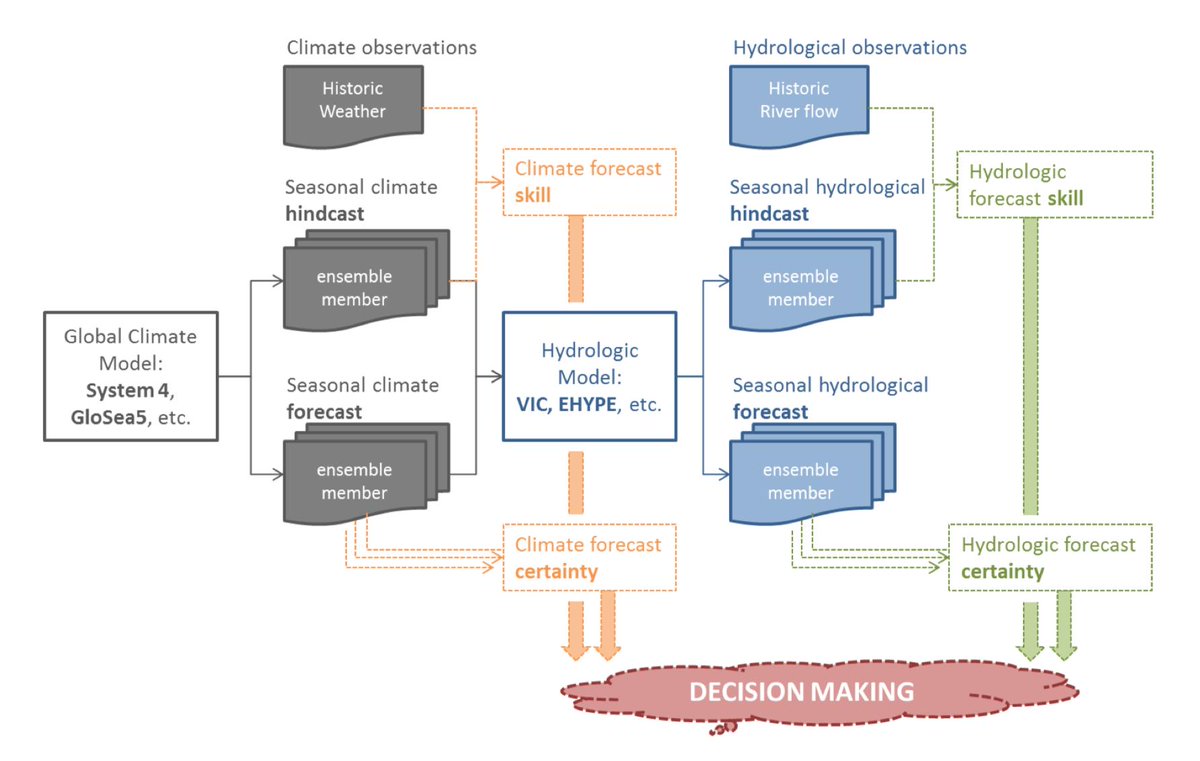- Introduction
- Situation in France
- Situation in Belgium
- Situation in the EU
- Future projection of soil water content
- Questions
Introduction
Water deficit affecting agriculture in France’s @Departement63 Puy-de-Dome @FannyGuine https://t.co/vpd33UDBGu
- Reduced milk prod. {+1L instead +4L start spring season}
- 66 % lower grain prod.
- Call to adapt Common Agriculural Policy to climate change
Viz below ↓ https://t.co/Z2CMTVTote
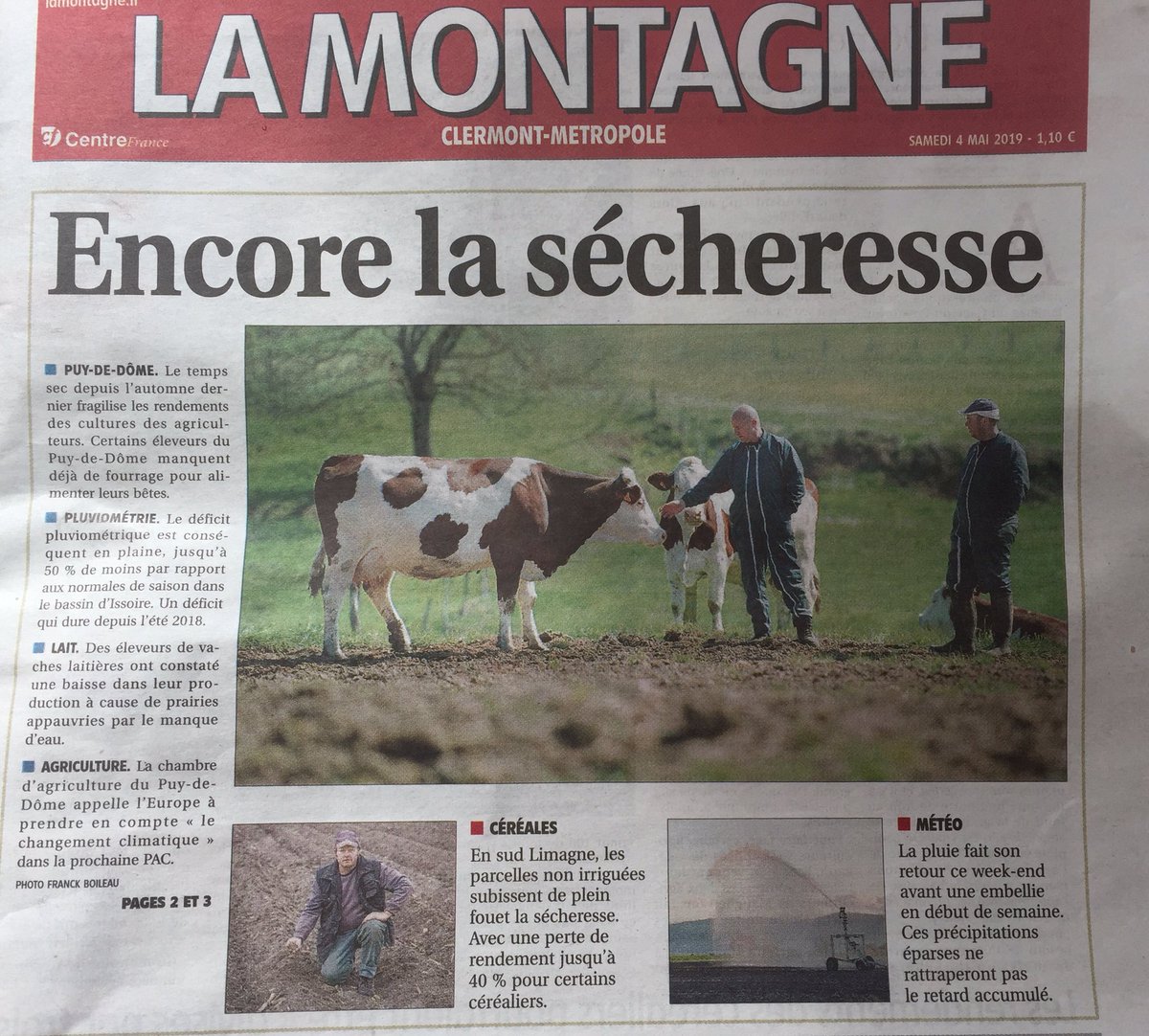
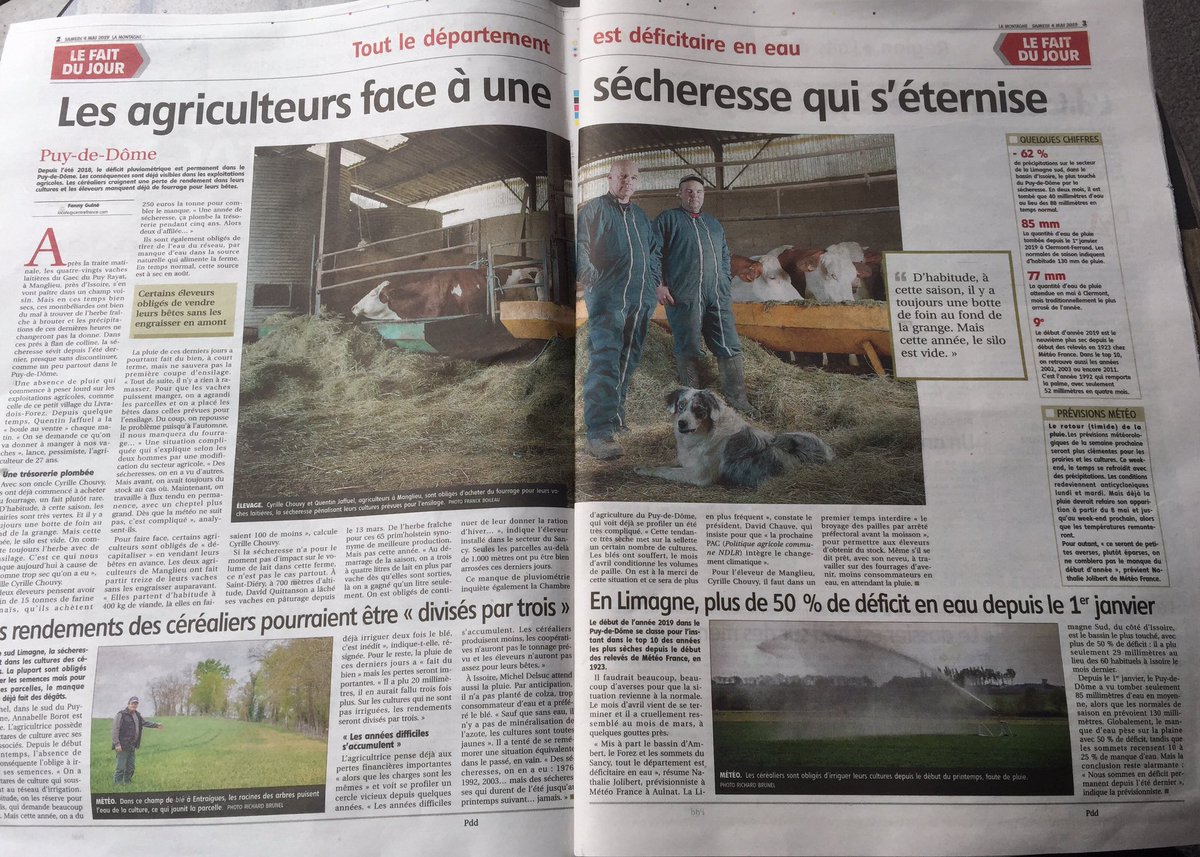 @CopernicusEMS Combined #Drought Indicator (CDI) - to indicate agricultural soil drought [https://t.co/QZzCsxVQnm] - learns:
@CopernicusEMS Combined #Drought Indicator (CDI) - to indicate agricultural soil drought [https://t.co/QZzCsxVQnm] - learns:
- winter drought ‘17 in FR/ES/PRT
- summer drought ‘18 lasting from July to December in EU
- ‘17/4, ‘18/4 : +- no drought <-> ‘19/4 : FR/ES/Balkans https://t.co/8mDaK73MK5
Situation in France
 Soil drought in @auvergnerhalpes in line with March DREAL analysis [https://t.co/r9ZPW1gDhV]:
Soil drought in @auvergnerhalpes in line with March DREAL analysis [https://t.co/r9ZPW1gDhV]:
- Deficit almost everywhere in region compared with 1981-2010
- +- 40% Allier / Puy-de-Dôme / North of the Loire
- > 50% in part of Limagnes https://t.co/y6Nl7FyMUC
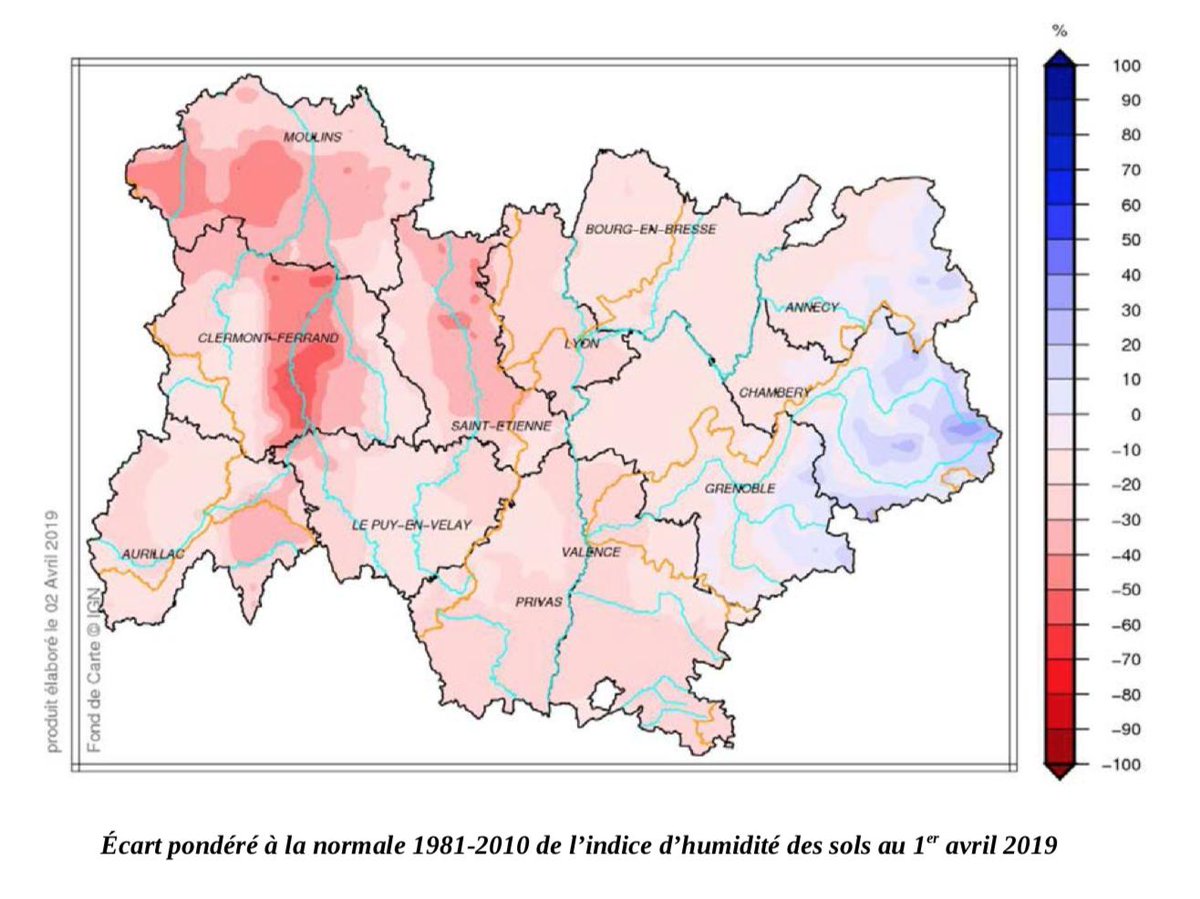 Globally depressed streamflow: a majority of test points has an average flow rate below the ‘Five-Year Dry Flow’ [= monthly flow with a 4/5 probability of being exceeded each year. It makes it possible to characterize a calendar month of low hydraulicity] https://t.co/BF81mq8m3b
Globally depressed streamflow: a majority of test points has an average flow rate below the ‘Five-Year Dry Flow’ [= monthly flow with a 4/5 probability of being exceeded each year. It makes it possible to characterize a calendar month of low hydraulicity] https://t.co/BF81mq8m3b
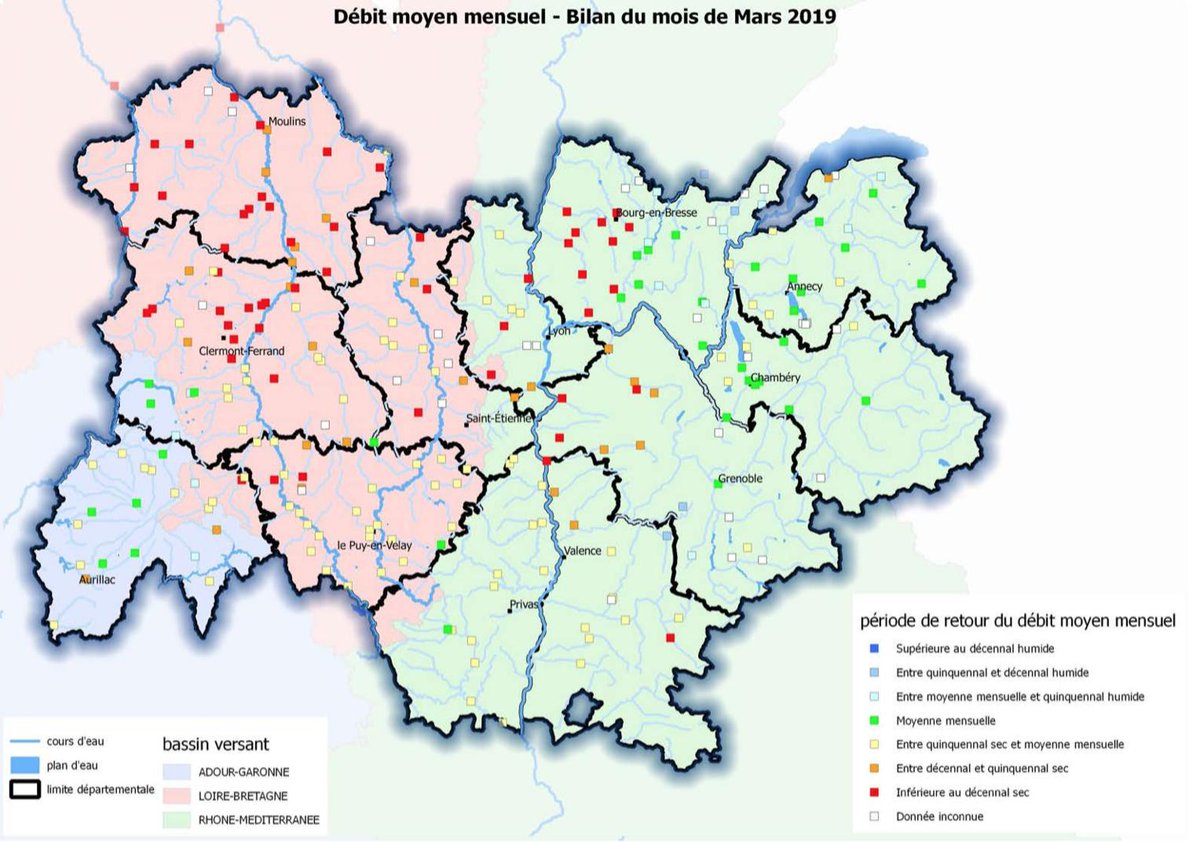 Majority of groundwater in the western part of the @auvergnerhalpes region has a very low level [red / orange dots]. With the recovery of vegetation, only very heavy spring rains are likely to reverse current trends. https://t.co/PaGgsyonld
Majority of groundwater in the western part of the @auvergnerhalpes region has a very low level [red / orange dots]. With the recovery of vegetation, only very heavy spring rains are likely to reverse current trends. https://t.co/PaGgsyonld
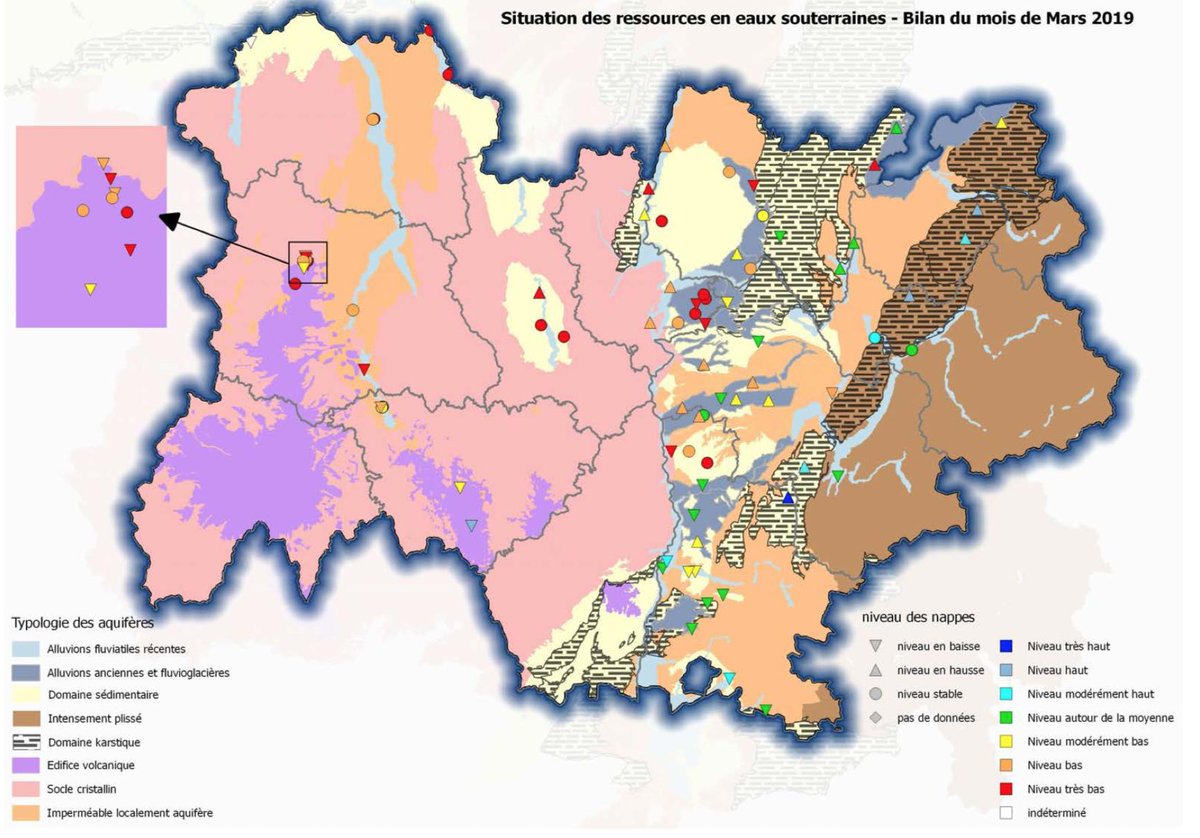 In the @auvergnerhalpes region, 2 departments are vigilant for water use (Ain and Rhône - since April 1).
In the @auvergnerhalpes region, 2 departments are vigilant for water use (Ain and Rhône - since April 1).
In France, 10 departments have a water usage restriction (beyond vigilance): https://t.co/6li6aUpP2m https://t.co/r3qaJjmlzn
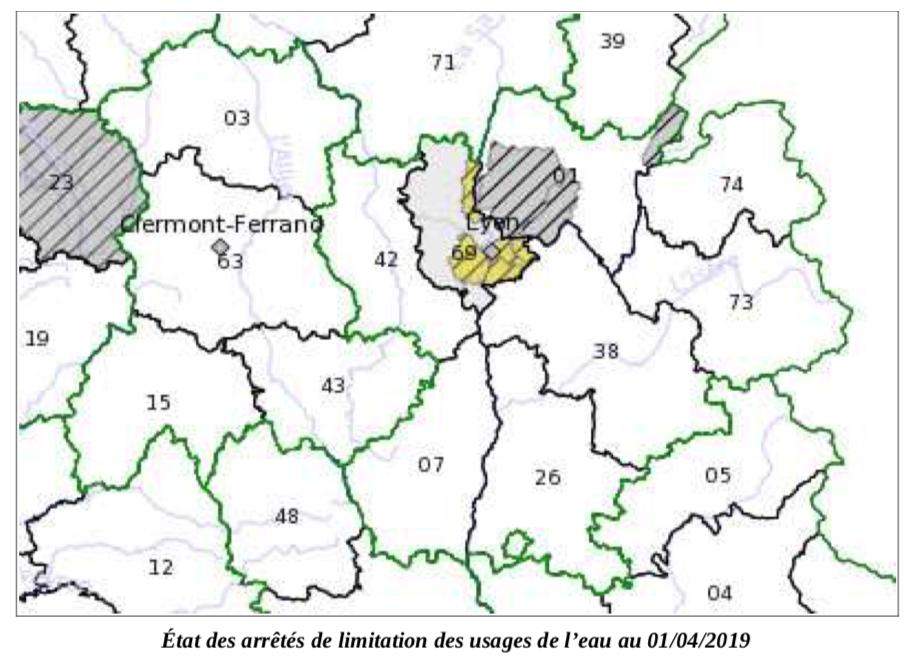

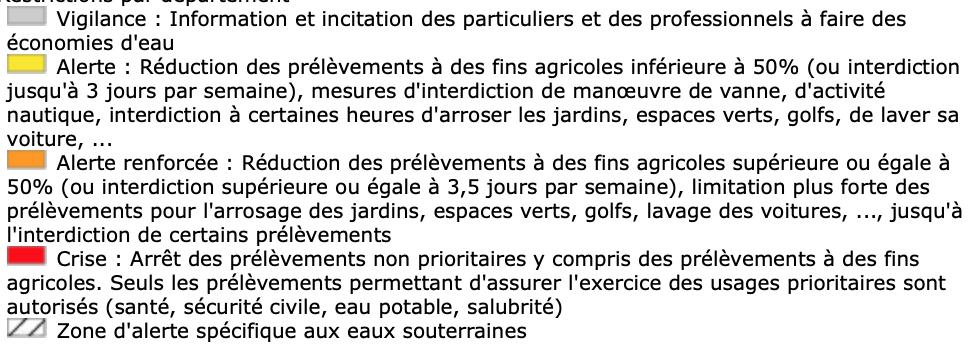
Situation in Belgium
In Belgium (Flanders), a similar deficit in groundwater level is observed: 1/3 of the measurement points are very low [brown], 38% of the measuring points have a normal level [white]. @DOVdovVO A debate is ongoing on water restrictions to avoid shortages during the summer. https://t.co/plgZyG2foQ

Situation in the EU
In the EU, @EUEnvironment [latest data 2015, https://t.co/3kOsHHVyHp] :
- Abstraction from rivers (64%), groundwater (23%) and reservoirs (10%)
- Pop/area affected by water stress ↑
- Water used for agriculture (40%), electricity (27%), mining/constr. (17%), households (11%) https://t.co/GfftiLkyaX
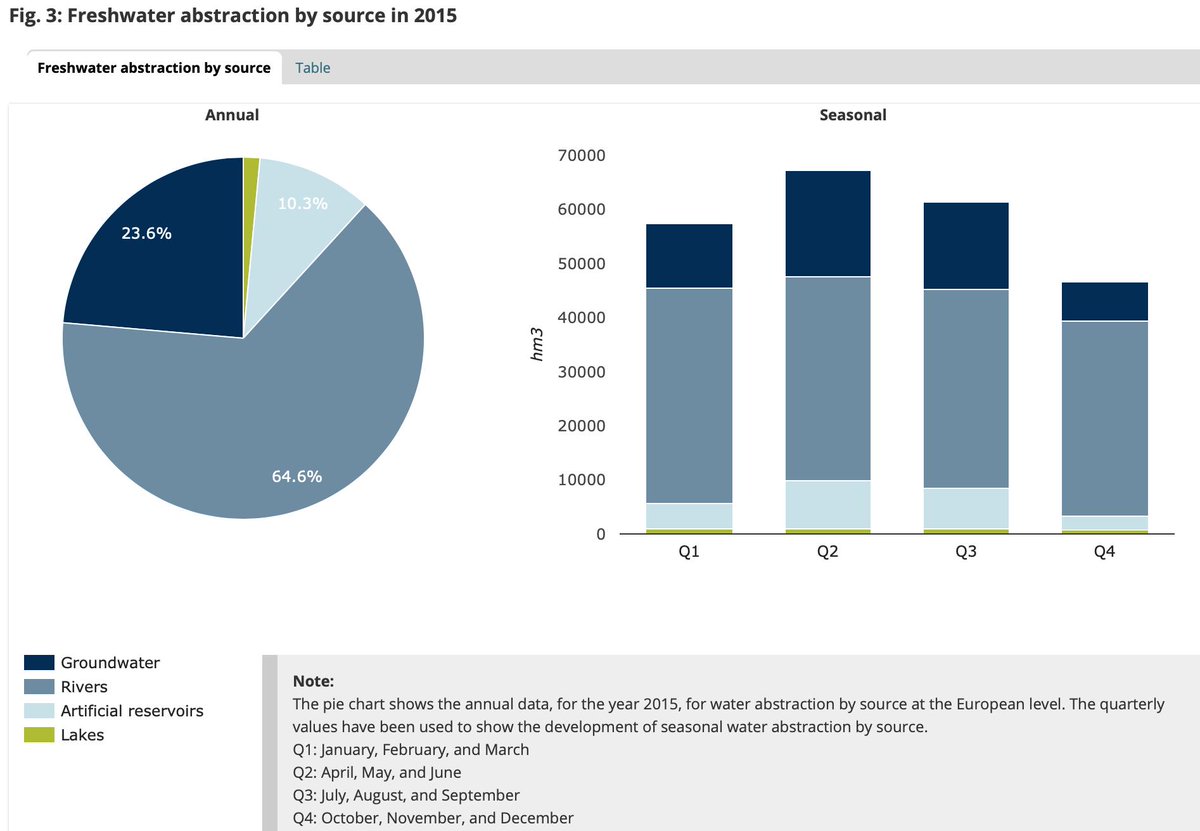
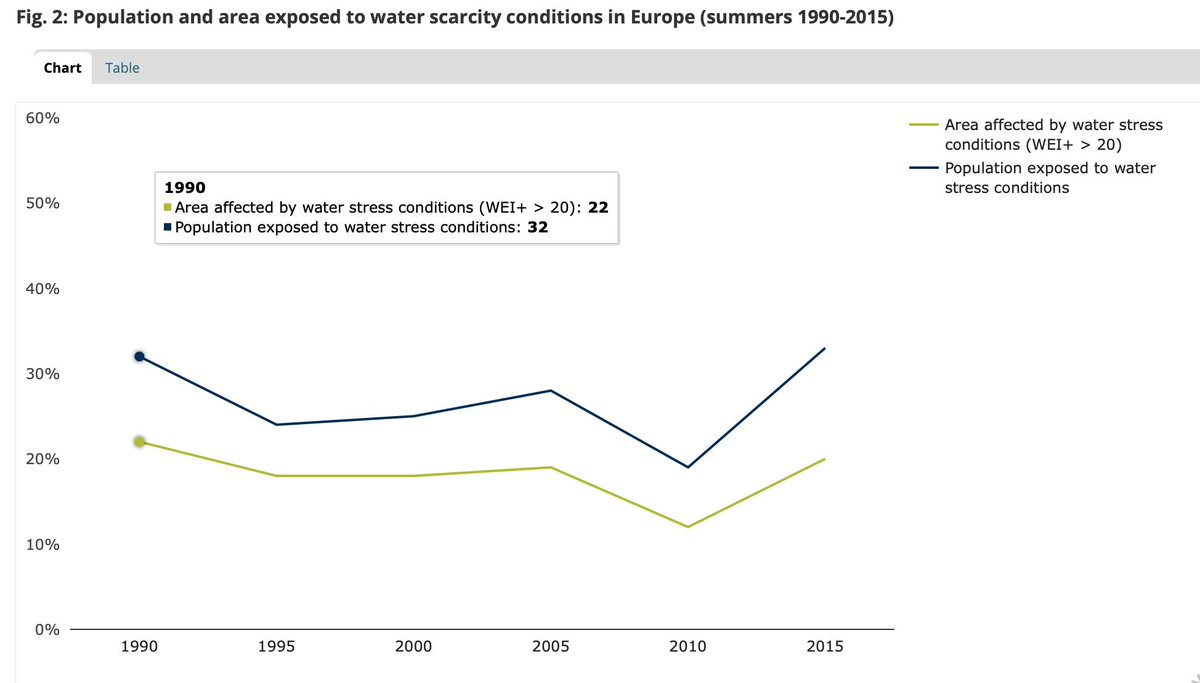
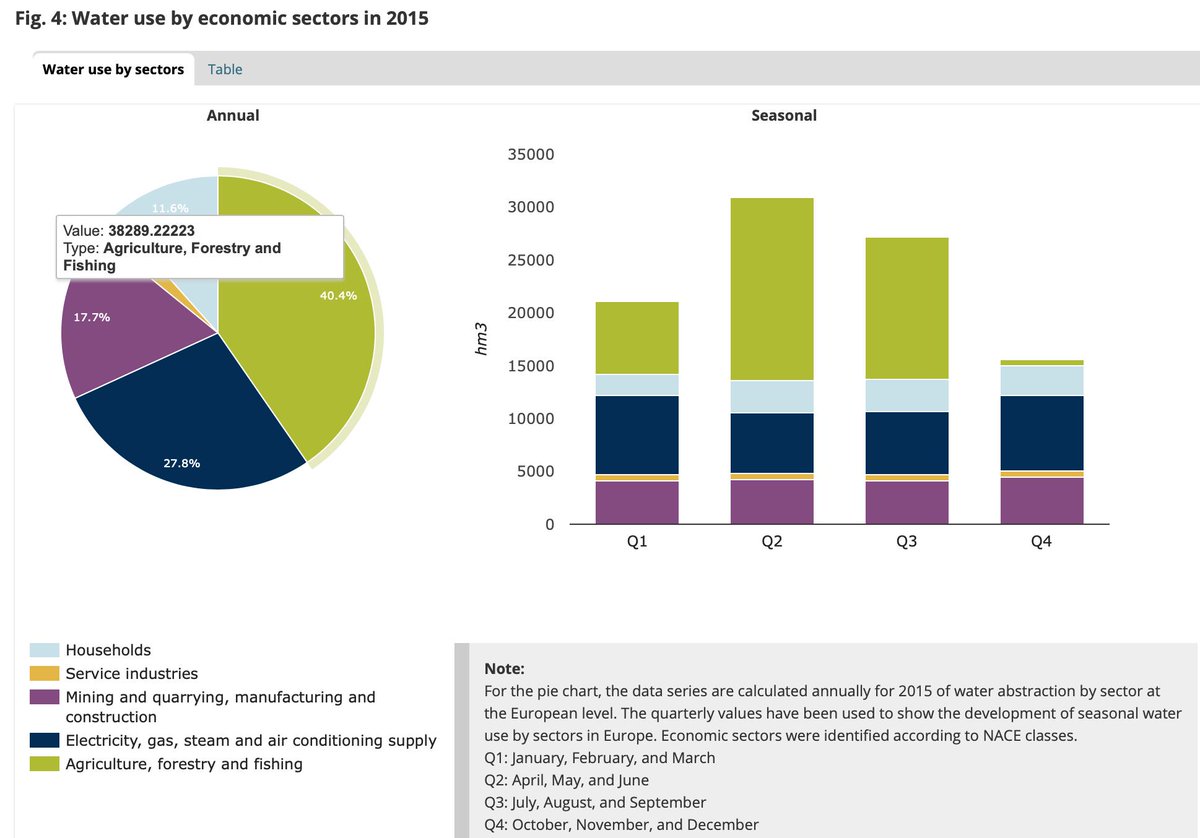
Future projection of soil water content
How will the soil water content evolve, depending on future #emissions? #SWICCA @CopernicusECMWF https://t.co/6RsRkwFlxL
2050:
- higher deficit in the South with high emissions (#RCP 8.5) compared to low emission scenario (#RCP 2.6 = 2° T-rise)
2080:
- difference more outspoken https://t.co/Xbu5TJ3tAC

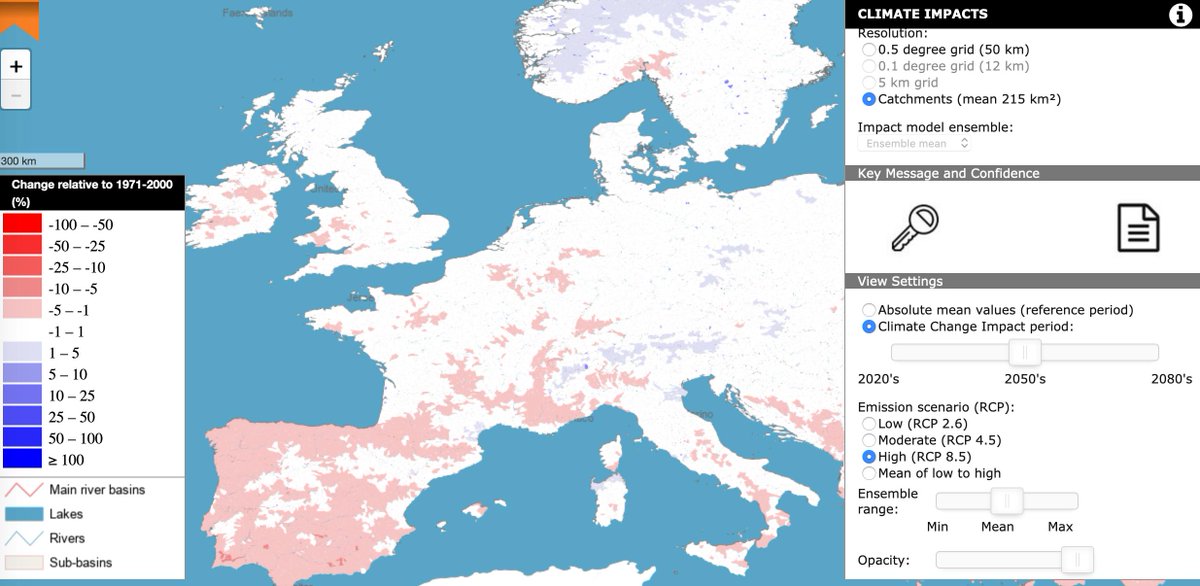
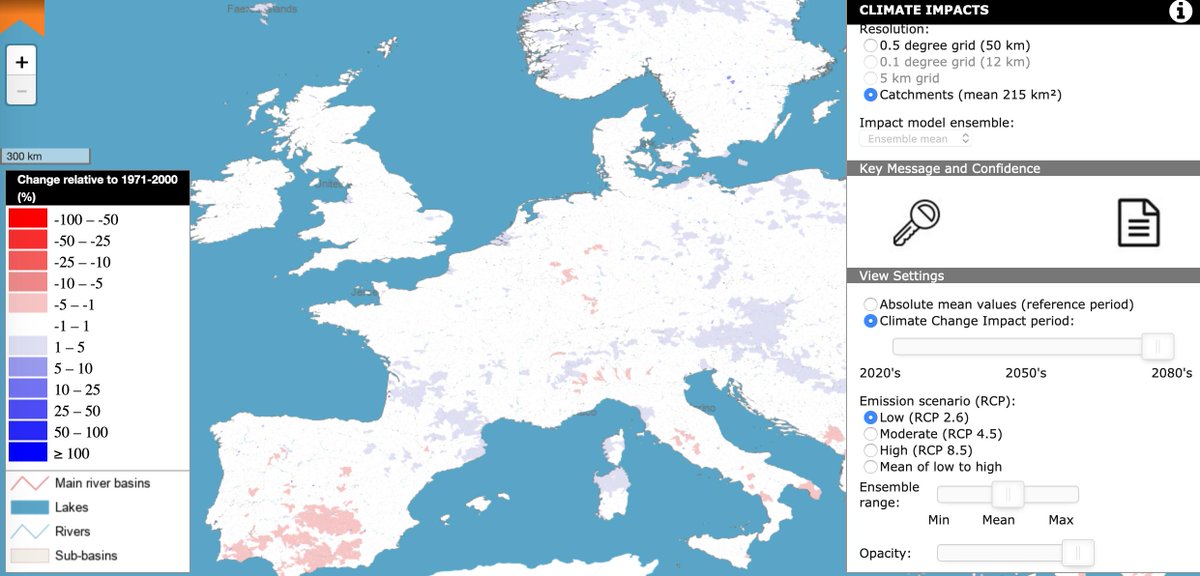
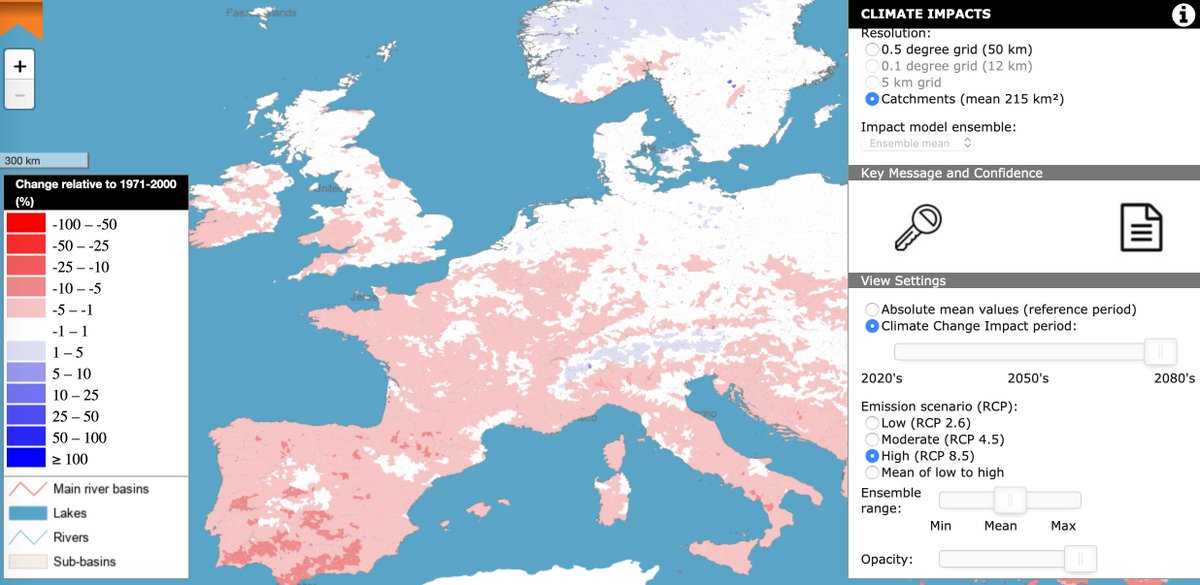
France (Auvergne Rhone-Alpes)
For the @auvergnerhalpes water catchment area, a decreasing soil water content in a high emission scenario (#RCP 8.5) can be observed as well [both for 2050 and 2080] @Hydro_research https://t.co/Z0tlJlJ9hi


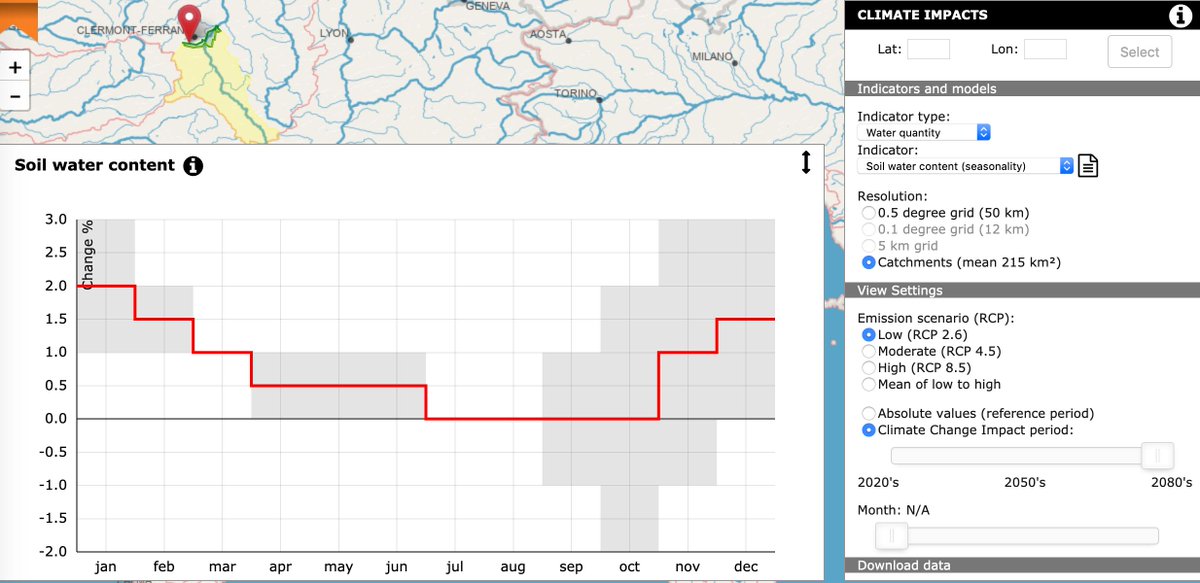

Belgium (Flanders)
In Flanders, the effect of future emissions on soil water content is less outspoken according to @CopernicusECMWF ensembles, although also indicating lower soil water content - specifically during summer - in a high emission scenario (2080) @klimaat_be @DOVdovVO @MarjoVanoppen https://t.co/gveTeM4MLD
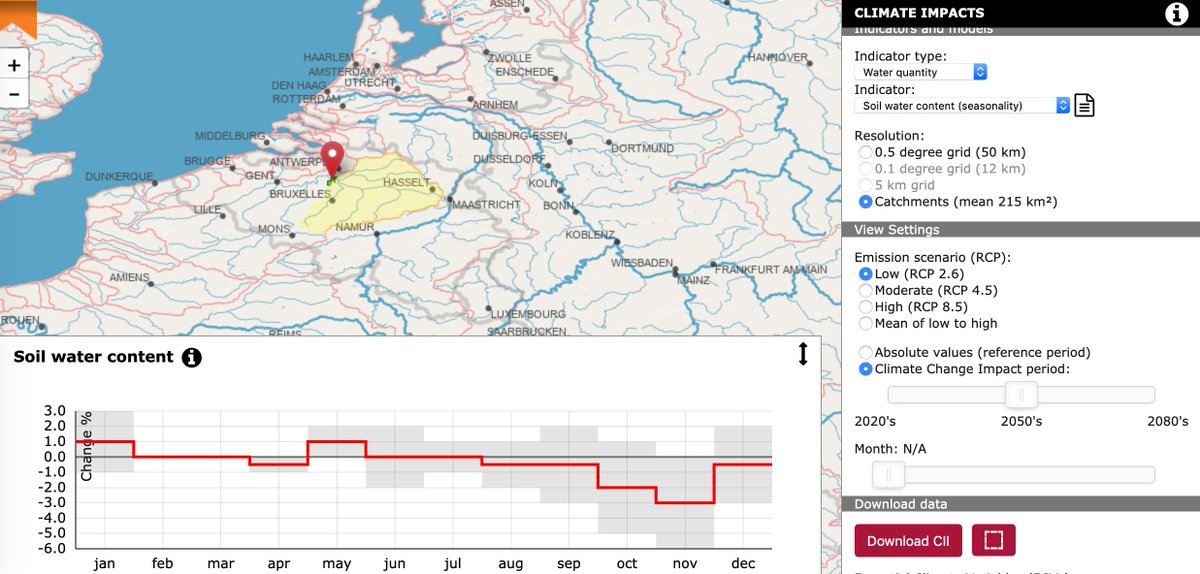
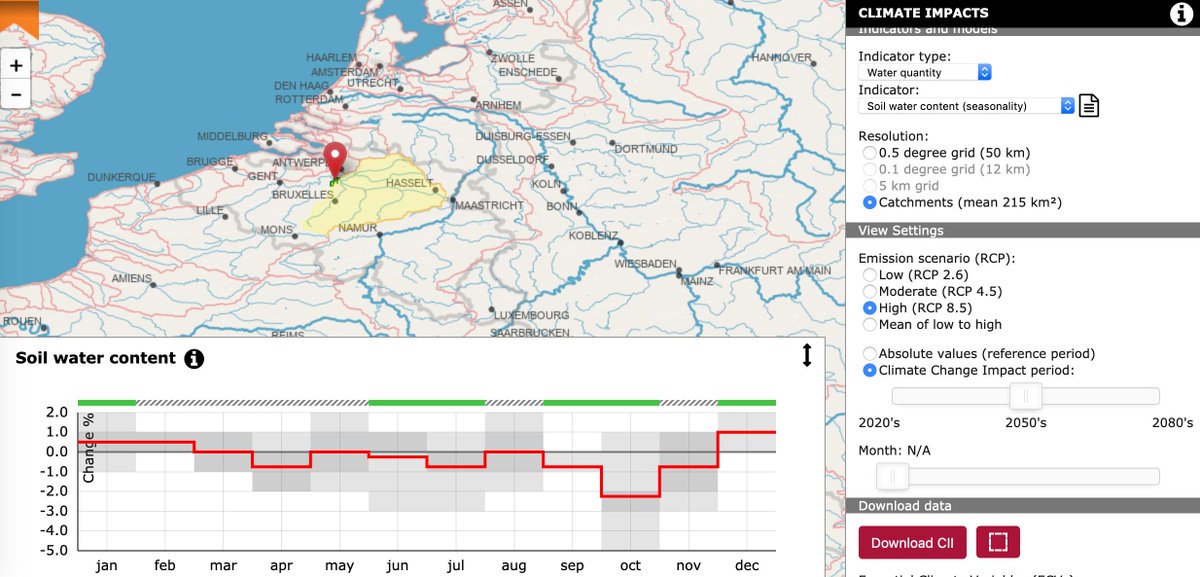
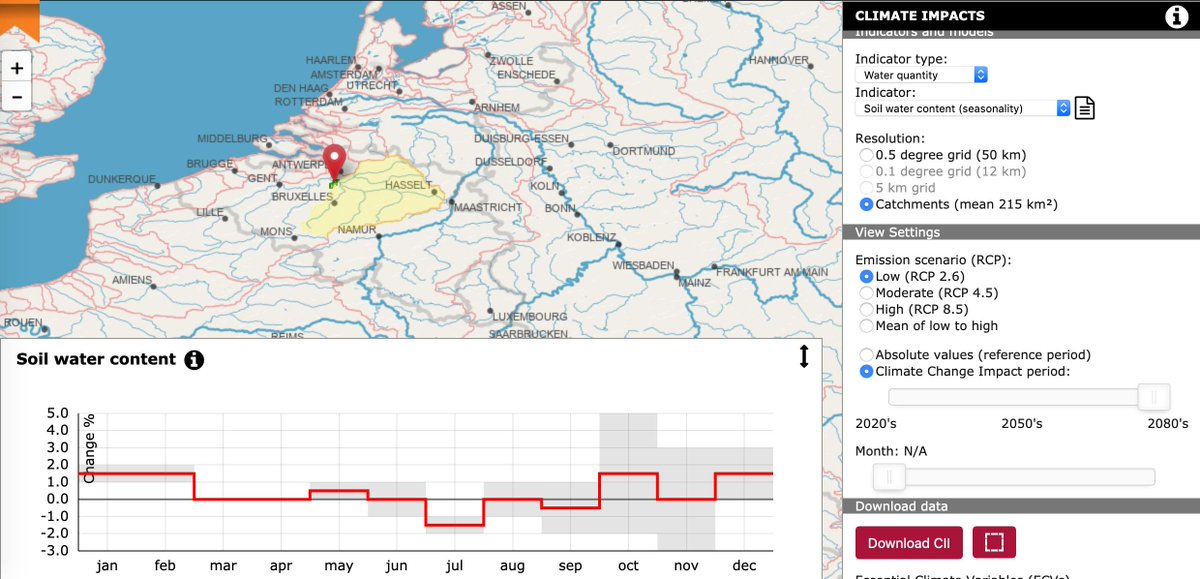
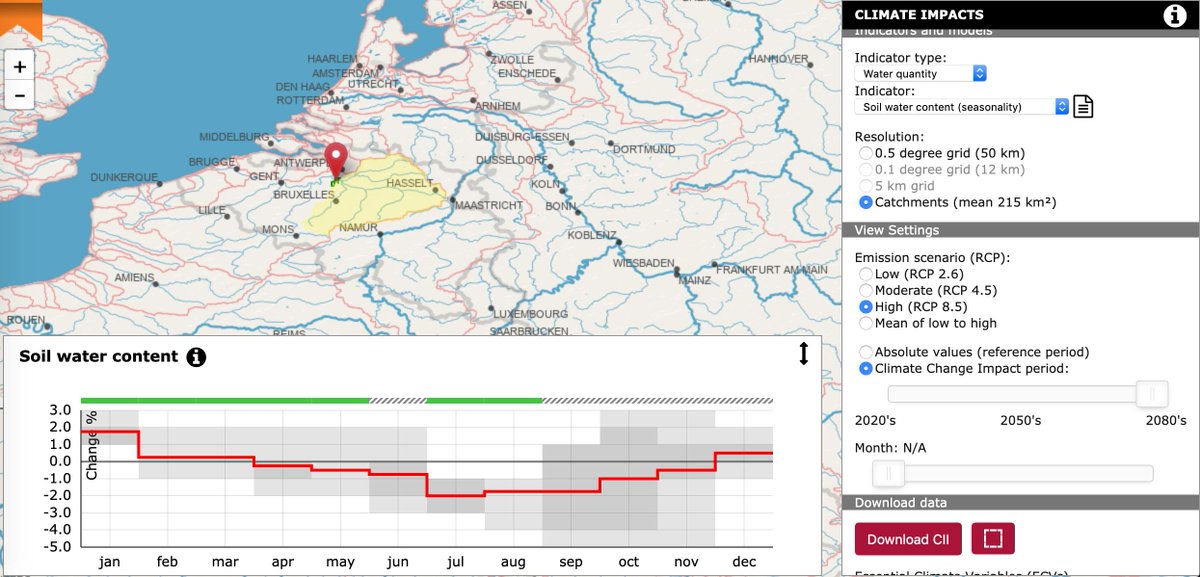
Questions
@Hydro_research, feel free to comment/evaluate these conclusions! Some thoughts: 1) For the long-term forecast, there is a 50km raster available for the #HYPE, #VIC421 and #LISFLOOD models, but for the catchment simulation (as above), only the #HYPE model is used. Why is this? https://t.co/t0eAjgFbK0

 2) [a] For the short-term seasonal forecast [https://t.co/c2L9wk6wFC: precip., T and river flow], only the #HYPE model can be used and [b] soil water content simulation is not available. Could you explain the reasons for those (a and b) ? https://t.co/FWhmIWIDle
2) [a] For the short-term seasonal forecast [https://t.co/c2L9wk6wFC: precip., T and river flow], only the #HYPE model can be used and [b] soil water content simulation is not available. Could you explain the reasons for those (a and b) ? https://t.co/FWhmIWIDle
